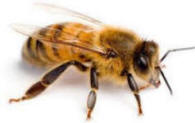CIDPUSA.ORG ❤
Autoimmune Diseases Web Search Page
Search CIDPUSA WEBSITE Alternative Treatments
Bayer CropScience is facing scrutiny because of the effect one of its best-selling pesticides has had on honey bees.

A German prosecutor is investigating Werner Wenning, Bayer's chairman, and Friedrich Berschauer, the head of Bayer CropScience, after critics alleged that they knowingly polluted the environment.
The investigation was triggered by an Aug. 13 complaint filed by German beekeepers and consumer protection advocates, a Coalition against Bayer Dangers spokesman, Philipp Mimkes, said Monday.
The complaint is part of efforts by groups on both sides of the Atlantic to determine how much Bayer CropScience knows about the part that clothianidin may have played in the death of millions of honeybees.
Bayer CropScience, which has its U.S. headquarters in North Carolina's Research Triangle Park, said field studies have shown that bees' exposure to the pesticide is minimal or nonexistent if the chemical is used properly.
Clothianidin and related pesticides generated about $1 billion of Bayer CropScience's $8.6 billion in global sales last year. The coalition is demanding that the company withdraw all of the pesticides.
"We're suspecting that Bayer submitted flawed studies to play down the risks of pesticide residues in treated plants," said Harro Schultze, the coalition's attorney.
"Bayer's ... management has to be called to account, since the risks ... have now been known for more than 10 years."
Under German law, a criminal investigation could lead to a search of Bayer offices, Mimkes said.
On this side of the Atlantic, the Natural Resources Defense Council is pressing for research information on clothianidin.
The U.S. Environmental Protection Agency approved the pesticide in 2003 under the condition that Bayer submit additional data. A lawsuit, which the environmental group filed Aug. 19 in federal court in Washington, accuses the EPA of hiding the honeybee data.
The group thinks the data might show what role chlothianidine played in the loss of millions of U.S. honeybee colonies.
Researchers have been puzzled by what is causing the bees to disappear at what is considered an alarming rate.
The phenomenon, known as colony collapse disorder, threatens a $15 billion portion of the U.S. food supply.
Beekeeper Zac Browning shipped his hives from Idaho to California to pollinate the blossoming almond groves. He got a shock when he checked on them, finding hundreds of the hives empty, abandoned by the worker bees.
The losses were extreme, three times higher than the previous year.
"It wasn't one load or two loads, but every load we were pulling out that was dead. It got extremely depressing to see a third of my livestock gone," Browning said, standing next to stacks of dead bee colonies in a clearing near Merced, at the center of California's fertile San Joaquin Valley.
Among all the stresses to bee health, it's the pesticides that are attracting scrutiny now. A study published Friday in the scientific journal PLOS (Public Library of Science) One found about three out of five pollen and wax samples from 23 states had at least one systemic pesticide - a chemical designed to spread throughout all parts of a plant.
EPA officials said they are aware of problems involving pesticides and bees and the agency is "very seriously concerned."